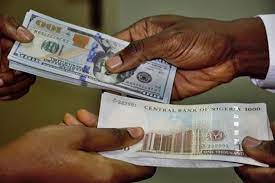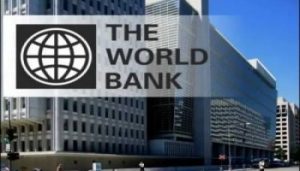
The Naira remained stable in the informal market during the mid-trading session, trading at approximately N1,615–N1,618 per U.S. dollar, while simultaneously gaining value against other currencies.
The local foreign exchange market is undergoing a historic shift, with daily transactions reaching half a billion dollars—suggesting that investors are beginning to embrace the Central Bank of Nigeria’s (CBN) extensive reforms.
These market reforms, implemented by the CBN—including modifications to regulatory bodies and last year’s adjustment to the EFEMS exchange rate management policy—are largely responsible for the notable increase in liquidity.
Although U.S. President Donald Trump’s trade tariff policy exempted oil, the energy market has remained mildly bearish and highly volatile. A key concern is China—the world’s largest oil importer—which raises fears of reduced global oil demand. Crude oil exports remain Nigeria’s primary source of foreign exchange income.
The U.S. dollar strengthened against the euro after President Trump announced a postponement of tariffs onthe European Union. Investors adopted a more risk-averse stance, which benefited the dollar. However,gains were capped by cautious optimism across the markets, and a sharp drop in durable goods orders somewhat dampened the rise of the haven currency.
There is an expectation that the U.S. dollar may lack near-term stimulus, as investors await the Federal Reserve’s meeting minutes set to be released later today. The Dollar Index (DXY), which tracks the dollar’s performance against a basket of major currencies, recorded gains for the second consecutive day on Wednesday, though it continued a downward trend overall.
The strengthening dollar overshadowed a better-than-expected Polish economic survey and improving conditions in the Eurozone. Furthermore, the U.S. postponement of tariffs on the EU helped neutralize the euro’s decline against other major currencies.
President Trump remarked that he would delay the impending 50% tariff on European Union goods until July 9, following a conversation with European Commission President Ursula von der Leyen. He noted that von der Leyen expressed a desire to negotiate in good faith, indicating there were issues that could be resolved cooperatively. Trump agreed to delay the tariff after von der Leyen proposed shifting the implementation date from July 1 to July 9.
The European Commissioner also noted that this delay could offer a short-term solution. However, on Friday, Trump indicated he was “not seeking a deal” with the EU and remained willing to enforce the 50% tariff starting June 1.
Macroeconomic data released from the U.S. on Tuesday helped ease recession concerns, providing a tailwind for the DXY. The U.S. Census Bureau’s Durable Goods Orders survey surprised markets. Estimates for March showed a 7.6% increase, later revised upward to 9.2%. However, April data revealed a -6.3% decline. Though this was worse than the previous month’s results, it still beat market expectations of a 9% decline. Additionally, non-transportation orders rose by 0.2% for the month.
The Dollar Index is attempting to bounce off a near-term bottom at the psychological level of 99.00. The pivot level at 98.80 provides a staging ground for cautious buyers, offering a potential re-entry point.
Market forecasts suggest the haven currency may face further headwinds unless the index convincingly breaks above key moving averages from a structural perspective. The immediate target for bullish momentum is the 100.00 psychological resistance level. While some optimism may lead to short-term rallies, the broader market sentiment remains cautious, with vulnerability to a break below 98.80 from a bullish point of view.






